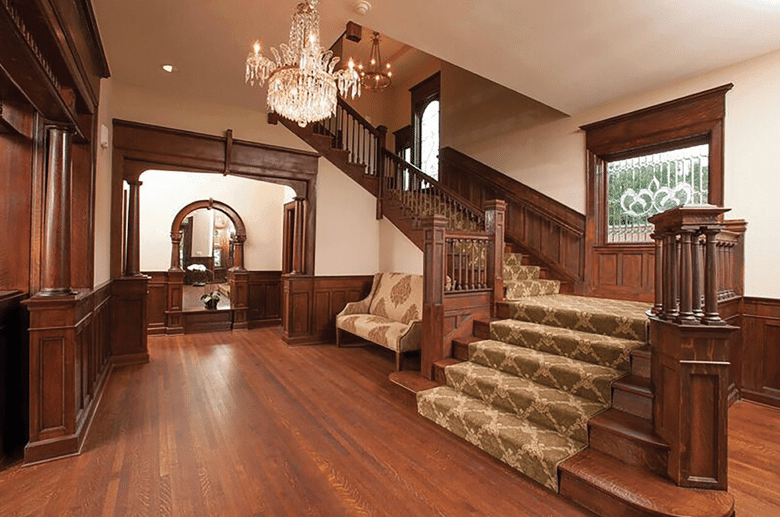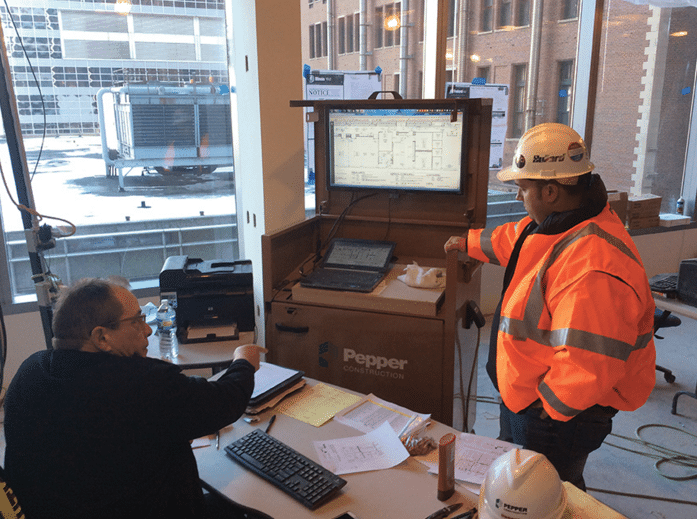Pepper Construction Group and McWilliams Electric Co., two members of PowerForward DuPage, played a tremendous role in renovating two Chicago landmarks.
Of the millions of buildings in the United States, less than 3 percent—an estimated 90,000 to 100,000—are on the National Register of Historic Places. While representing only a small slice of the nation’s building population, a bevy of stakeholders ensure these prominent landmarks meet exacting standards. They often require extensive upgrading by contractors with an additional level of expertise and experience.
Pepper Construction Group is a nearly 90-year-old, third-generation general contracting and construction management firm headquartered in Chicago. It is the third-largest contractor in the Midwest and the 45th largest in the nation. Following, experts and members of the Pepper electrical subcontracting teams discuss details of the high-profile historic upgrades at the White House in Barrington, Ill., and Wrigley Field in Chicago. They also offer tips for success in vintage structure renovations.

The interior of the White House in Barrington, IL.
Barrington’s White House
In July 2014, Pepper Construction embarked on the renovation of the White House, a three-story, 14,000-square-foot home built in 1898. The goal was to turn it into an elegant and highly functional community center capable of hosting weddings and other special events. Located in the center of Barrington, approximately 35 miles northwest of Chicago, the renovated structure opened its doors to visitors a year later as part of the town’s 150th anniversary in July 2015. The 15-month-long restoration project officially wrapped up in October 2015.
“We had an average of 30 tradesmen on a daily basis and as many as 90 tradesmen working on the building, which contains three floors and a basement, all in conjunction with a retail center being built by Pepper Construction on the site next door,” said Chet Busse, senior project manager, Pepper Construction.
Though the Classical Revival architectural-style home was converted to a senior residence in the 1930s and to office space in the 1970s and 1980s, Pepper Construction focused on returning it to its roots.
“We strove to maintain the original millwork and did a 3-D scan of the exterior elevations and roof so that we had exact measurements to replicate,” Busse said.
In addition to updating the kitchen and expanding the third-floor ballroom to accommodate large parties, the renovation also involved constructing an addition that included an elevator, a second set of stairs and seven new bathroom facilities.
With support from electrical contracting partner Scott Swayze, vice president of McWilliams Electric Co. Inc., Schaumburg, Ill., all old mechanical parts and pieces were removed. New panels and service to the building were installed, down to the conduit and wire. This effort involved everything from lighting fixtures, switches and outlets to lightning protection and fire alarm systems.
In an attempt to be as environmentally responsible as possible, the upgrade also involved the installation of a geothermal heating and cooling system that will significantly reduce the building’s long-term operating costs.
“We had seven wells cored outside that go 500 feet deep and circulate a mixture of water and glycol, which provide cooling from a 57°F base and heating from that same highly efficient configuration,” Busse said.
By implementing these and other measures, such as light-emitting diode (LED) lighting and controls, the White House achieved LEED Gold status—the first facility to do so in Barrington—and experienced a 42 percent energy reduction.
“In addition to being a beloved part of the town’s history, it’s now also an energy-efficient structure,” Busse said.
Challenges on the project involved the removal of existing millwork and wainscoting to replace electrical devices.
“We had carpenters working alongside our electricians to make repairs with minimal cost and disruption,” Busse said. “There were also modern codes that needed to be addressed, and we needed to fully understand the space—we were uncovering old code items all the time.”
This included the house’s original vintage knob-and-tube wiring that was buried in attic spaces.
Pepper Construction was involved in the preplanning and reconstruction of the White House since 2012.
“This project was very special to all of us, and to know that our work will help ensure that the structure can remain here for a long time to come is very rewarding,” Busse said.
Wrigley Field
Pepper Construction’s renovation and expansion of Chicago’s beloved Wrigley Field baseball park began a few years ago with enabling projects designed to support major reconstruction that will likely continue into 2018–2019.

A rolling Knaack DataVault with a large-screen monitor was used on the job.
“The purpose of the project is to preserve Wrigley Field for the future while providing an enhanced fan and player experience,” said Jim Nissen, Pepper Construction executive vice president.
Among the projects completed so far are the removal and replacement of outfield bleachers with bigger bleachers that allow more space for fans to gather.
“In addition, we’ve been working around the foundation and structure of the entire ballpark to support new concession areas and party spaces on upper levels that will add load, have added elevators, and are in the process of building a new clubhouse for players, a tunnel between the clubhouse and dugout, and new office/retail space adjacent to the ballpark,” Nissen said.
The projects will involve LED lighting, variable frequency drives, Ideal Industries’ Audacy wireless lighting control/energy management system, and other new technologies.
The team also installed two new video boards in the stadium while maintaining the existing historic scoreboard, which wasn’t without its challenges.
According to Dan Maimonis, project executive, electrical contracting partner Kelso-Burnett, and Bill Martin, Jr., project manager, Kelso-Burnett, the contactor that measures balls and strikes in the old scoreboard is historic and irreplaceable, so it required a lot of care. In addition, the scoreboard was controlled from the press box behind home plate, so it had to be removed and replaced because the wiring went through the left-field portion of the bleachers.
In addition to the team of nearly 200 contractors having to work in the tight constraints and cold-weather months of the offseason, the stadium’s electrical system had undergone many additions over the years and involved a collection of different technologies.
“We’ve worked with utility ComEd to upgrade all of their feeds to the stadium and rebuild the entire distribution system to bring it up to the current standard,” Nissen said. “It had been built to code at the time, but the technology is completely different now.”
In addition, the sheer quantity of labor, the short time period and the tremendous volume of conduit and wire to pull required tight coordination, a reality exacerbated by contractor labor shortages in Chicago, the site of many other construction projects happening concurrently.
“This is one of the most complicated and challenging jobs we’ve ever done but also one of the most rewarding because it’s such an iconic structure in Chicago,” Nissen said. “It’s exciting to be a part of it.”
“Wrigley Field is one of the most unique projects I’ve been involved with, but as a lifelong Chicagoan, it was one I had to work on,” Maimonis said.
